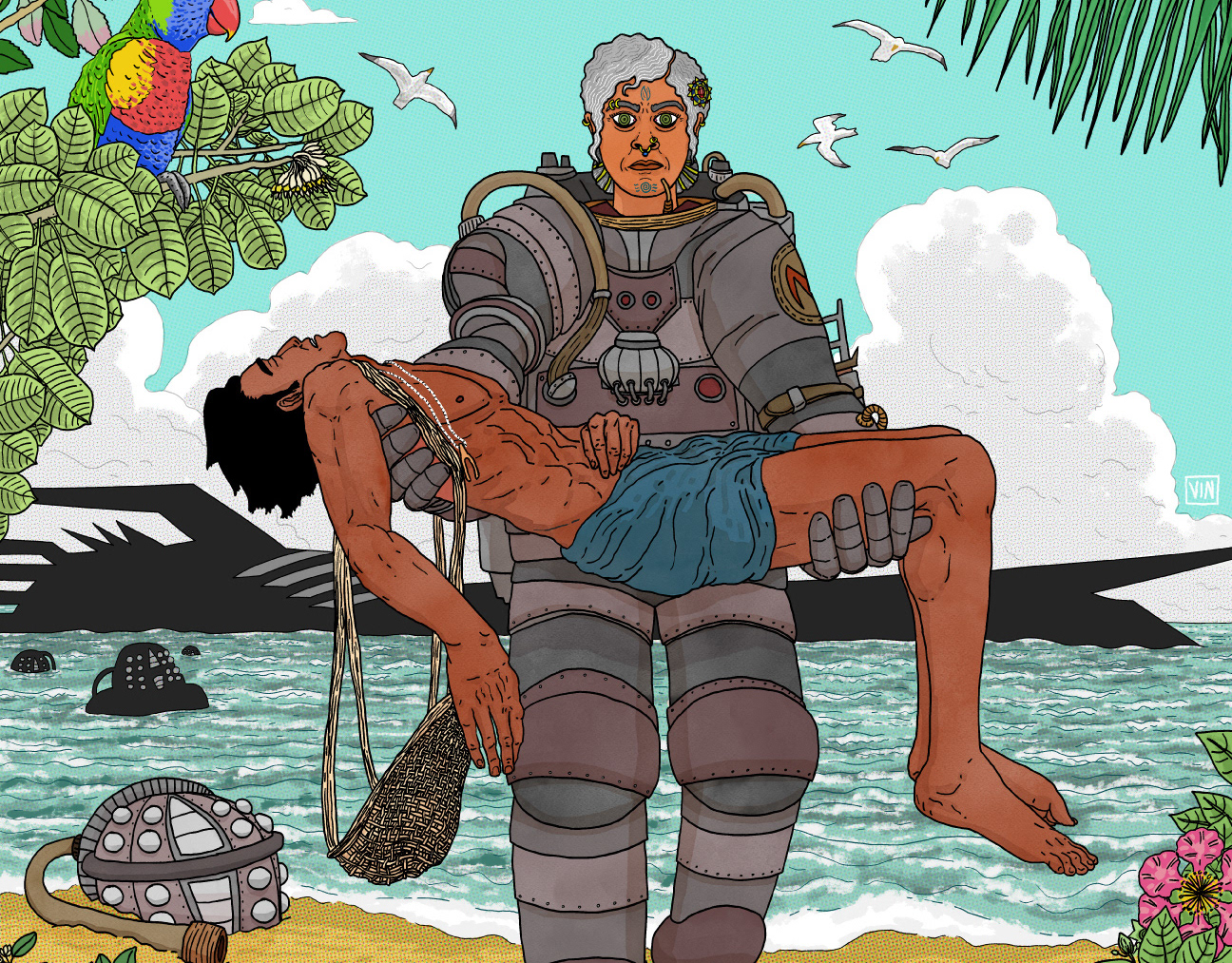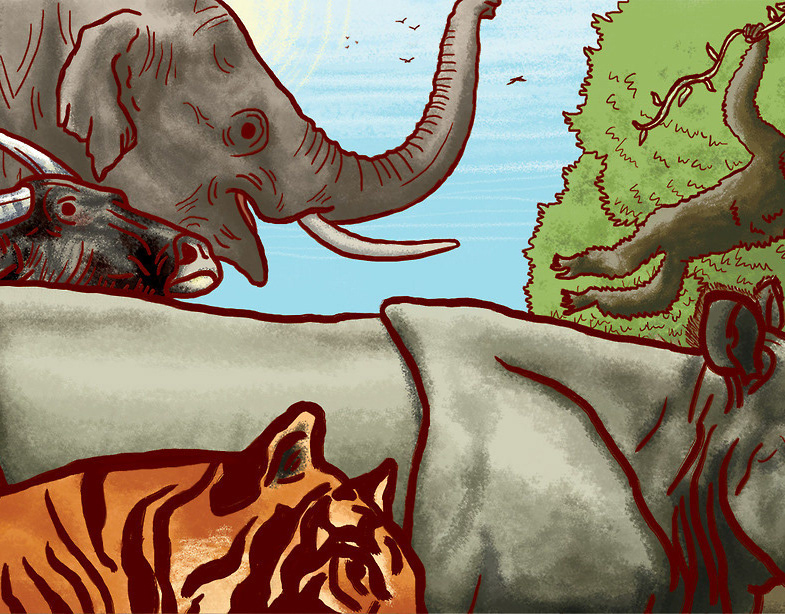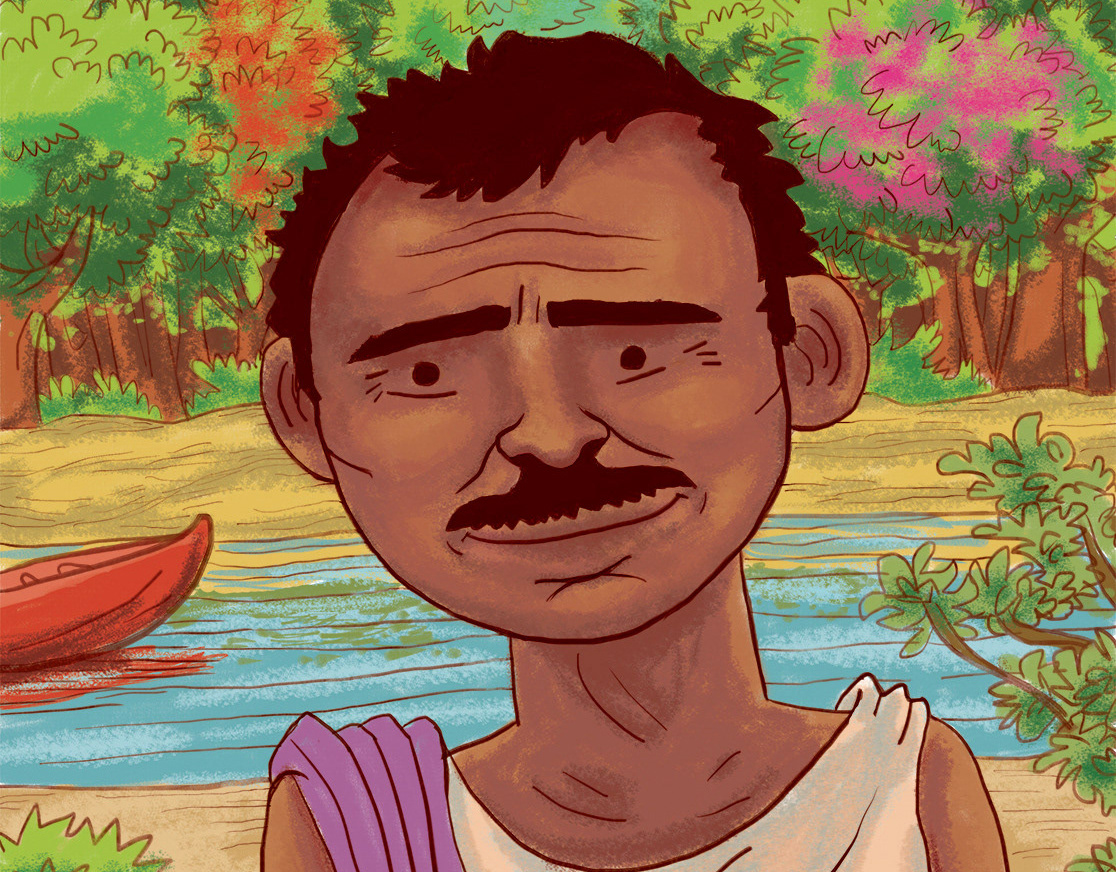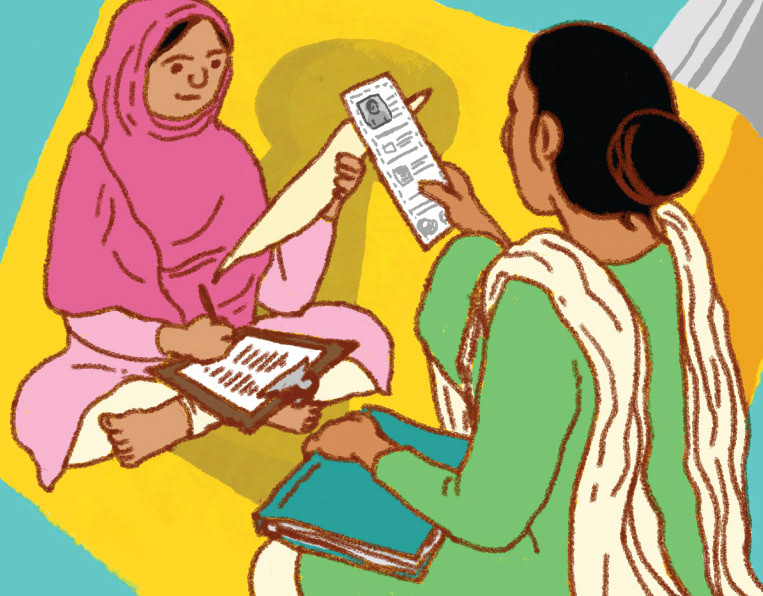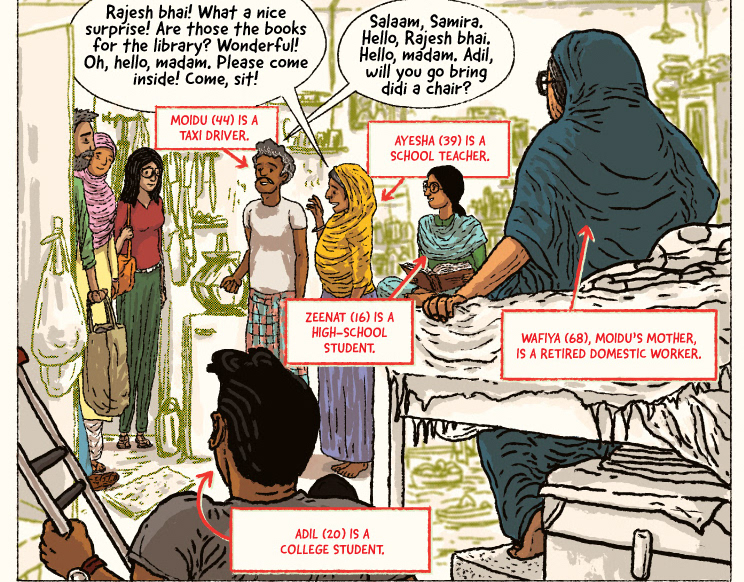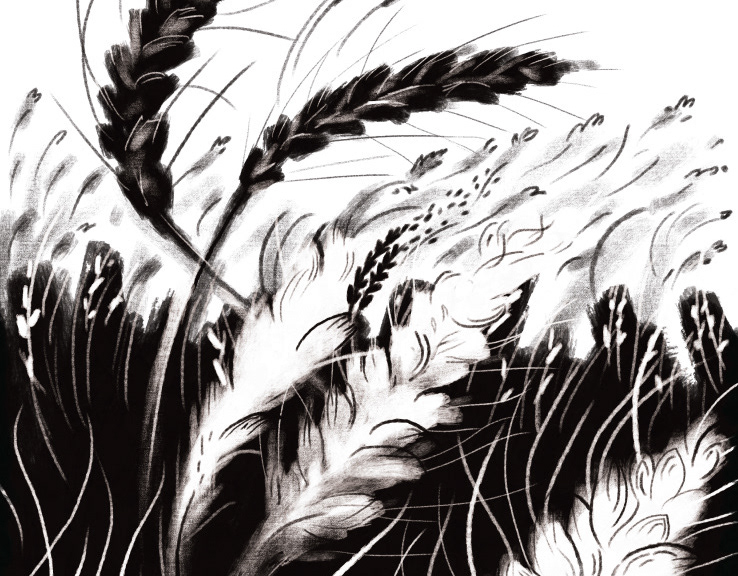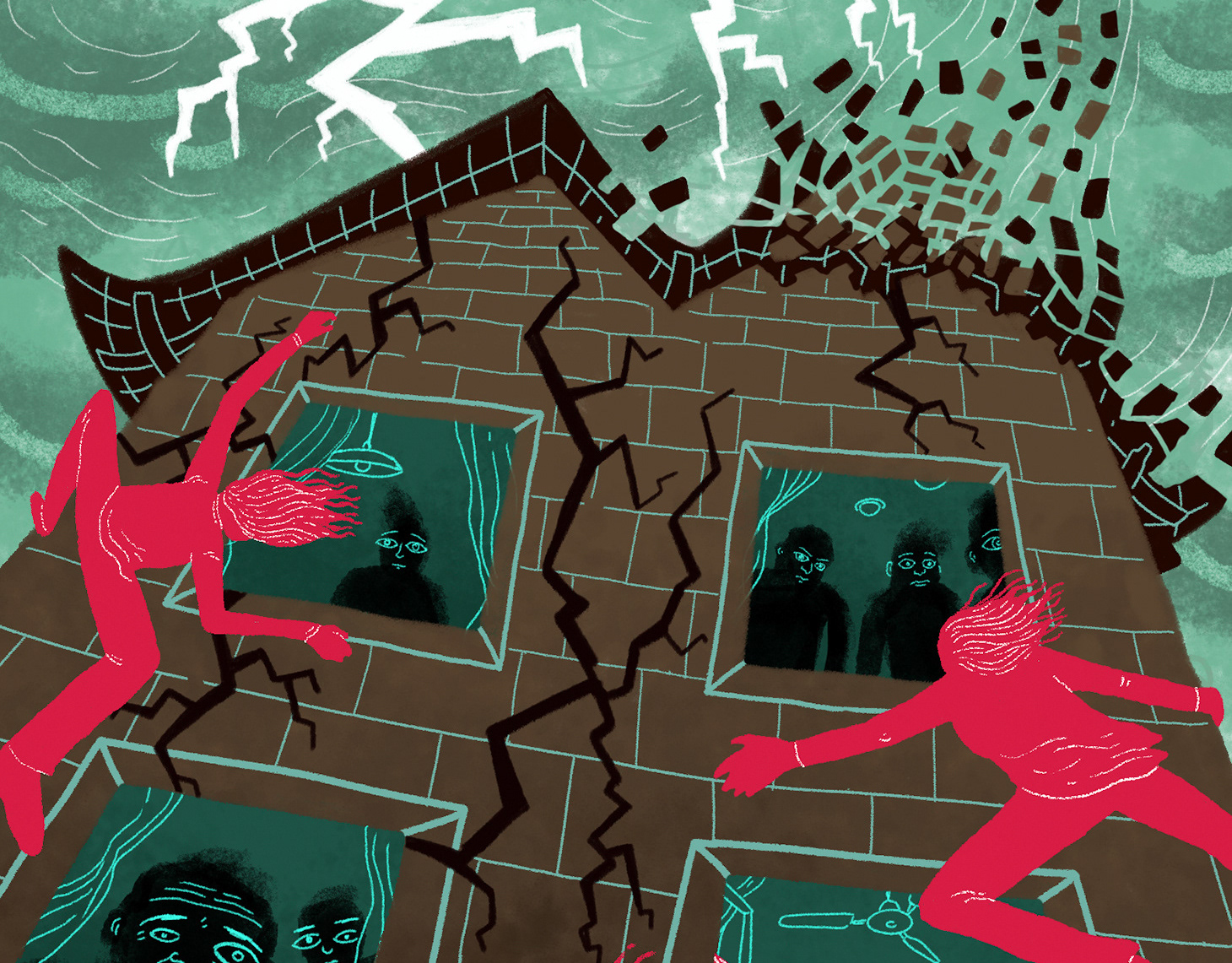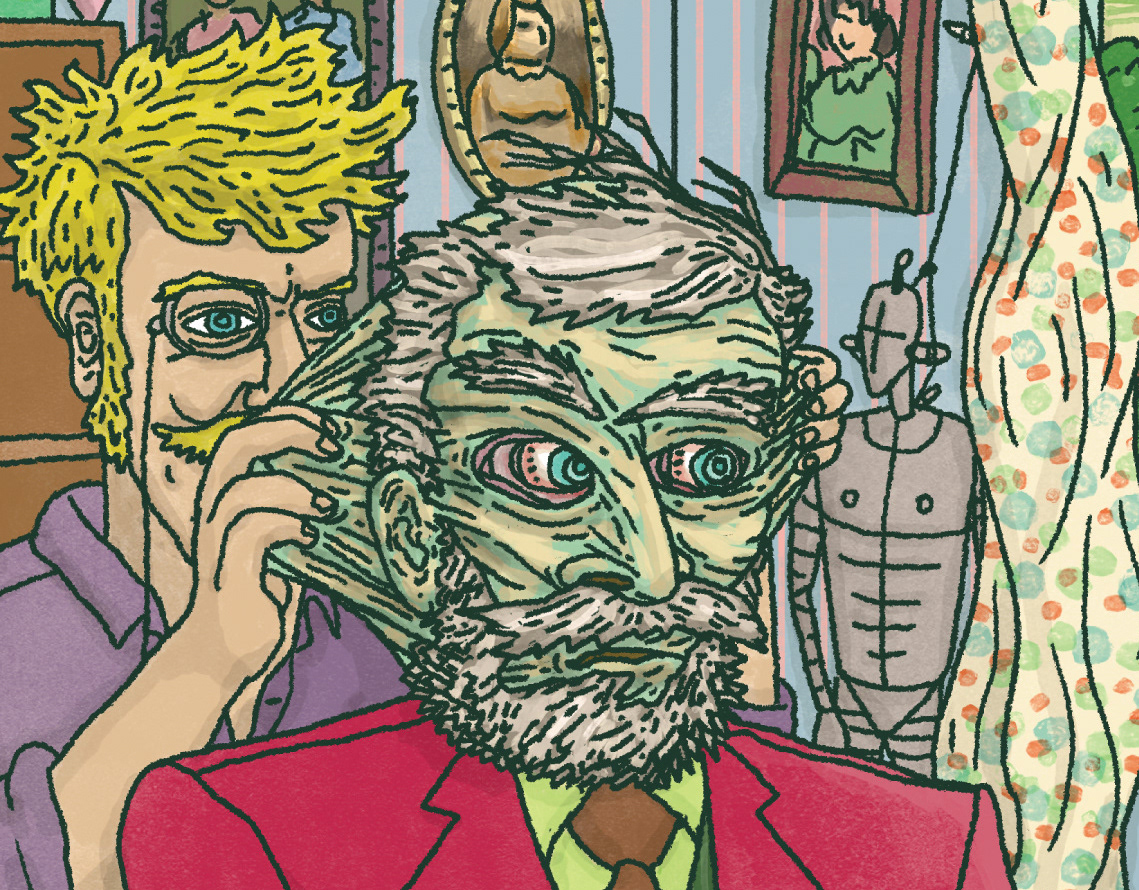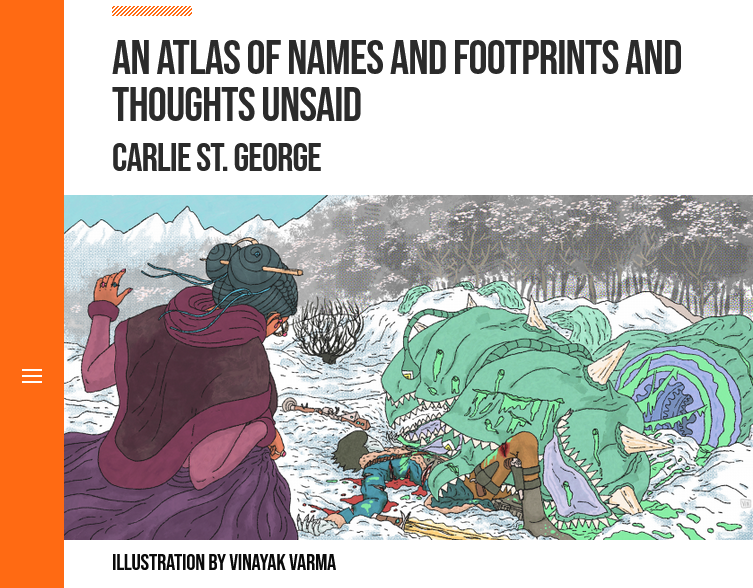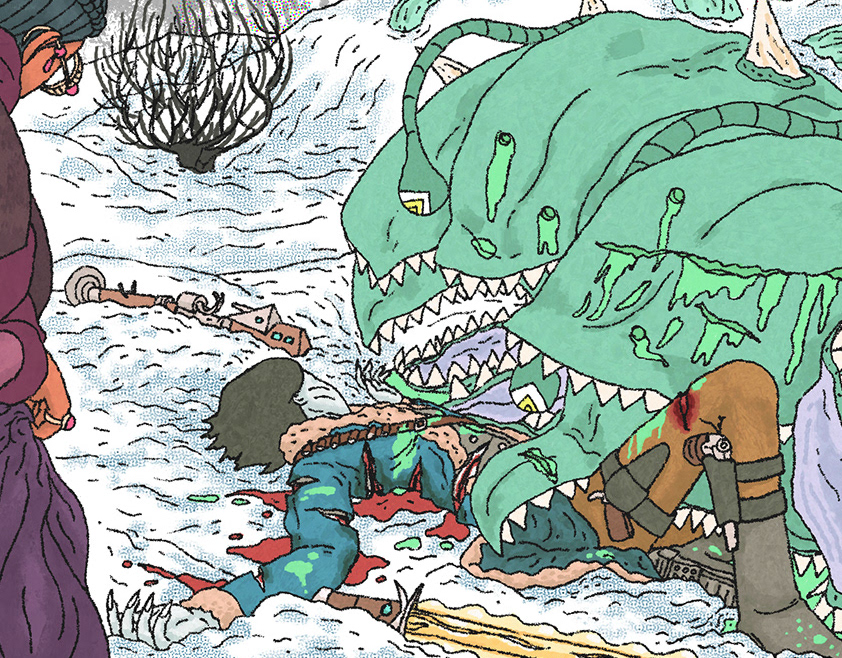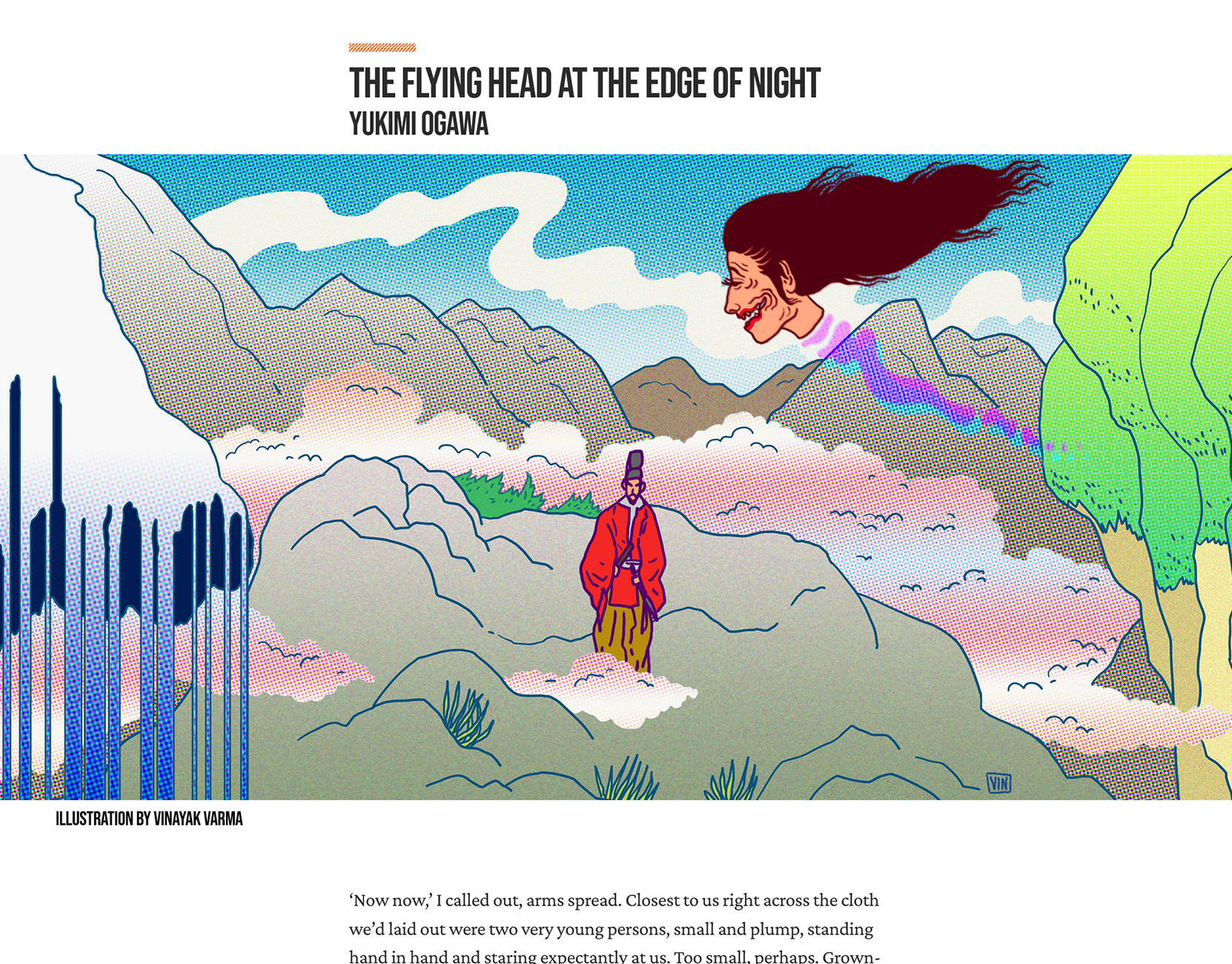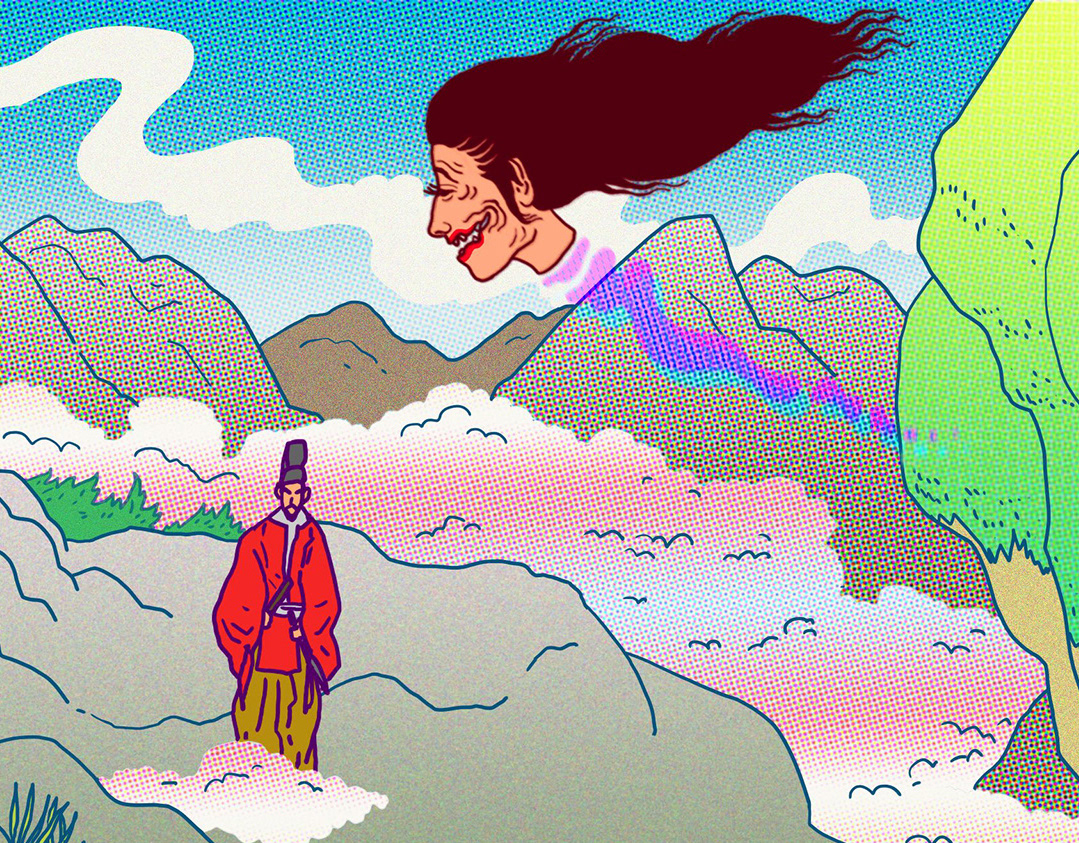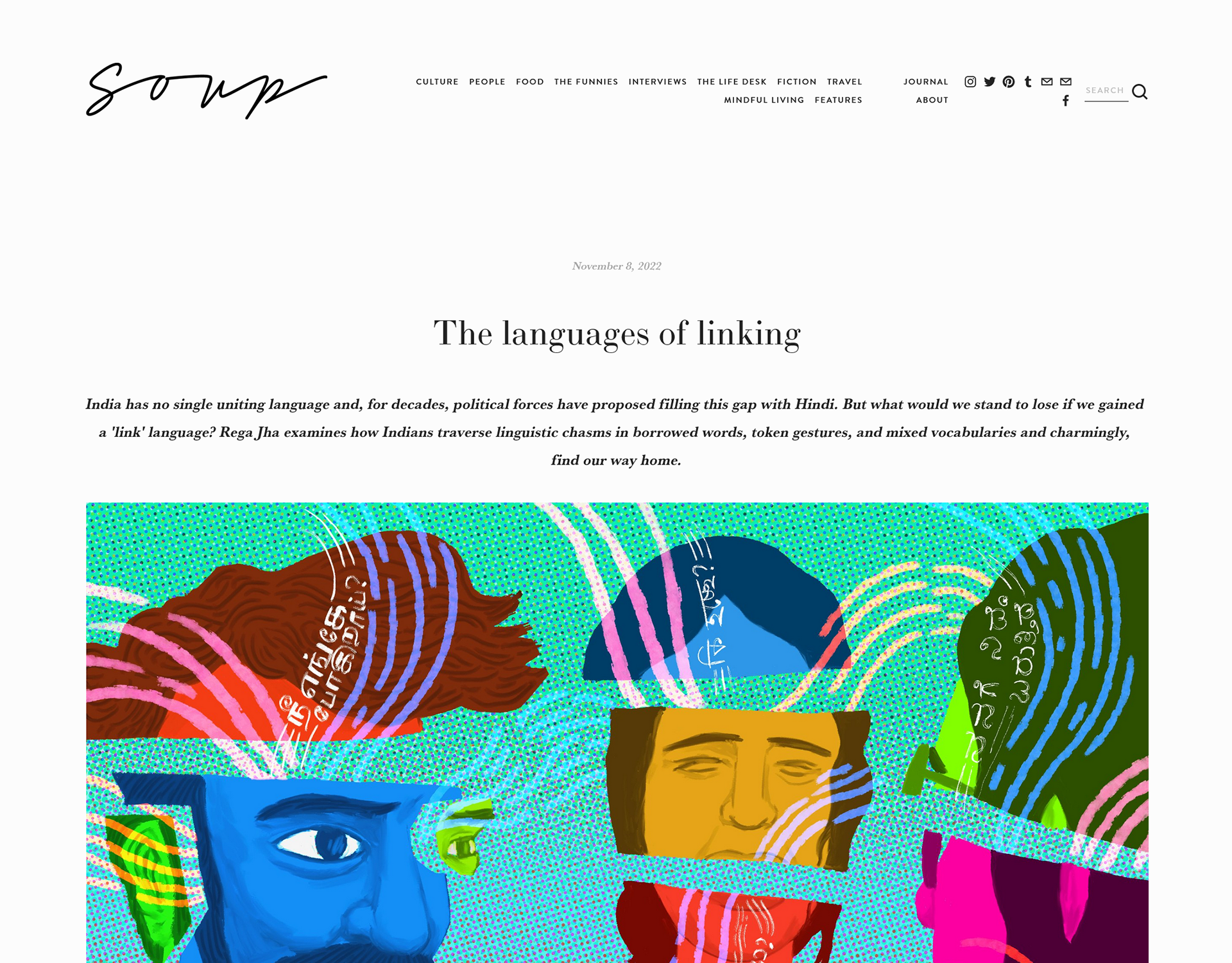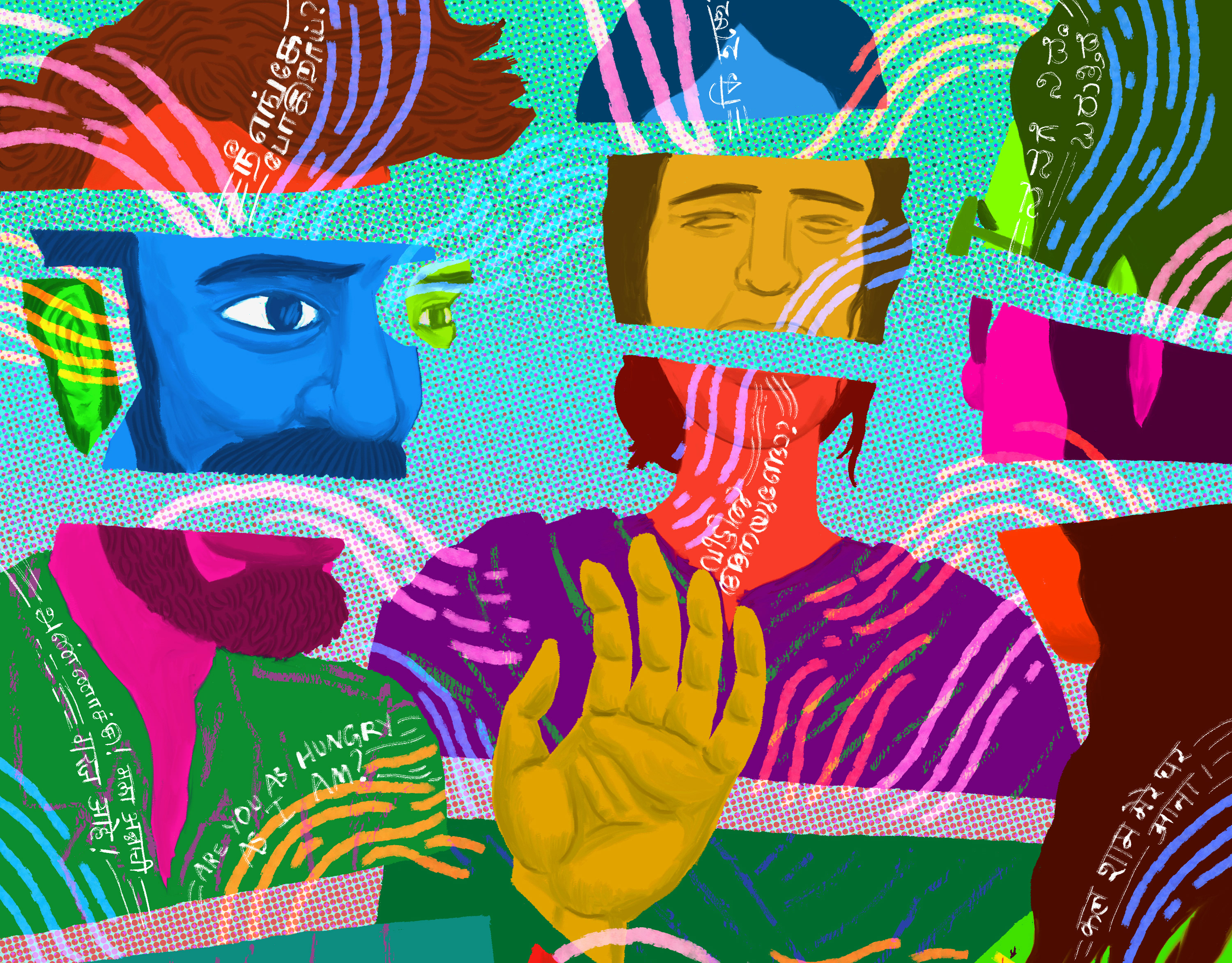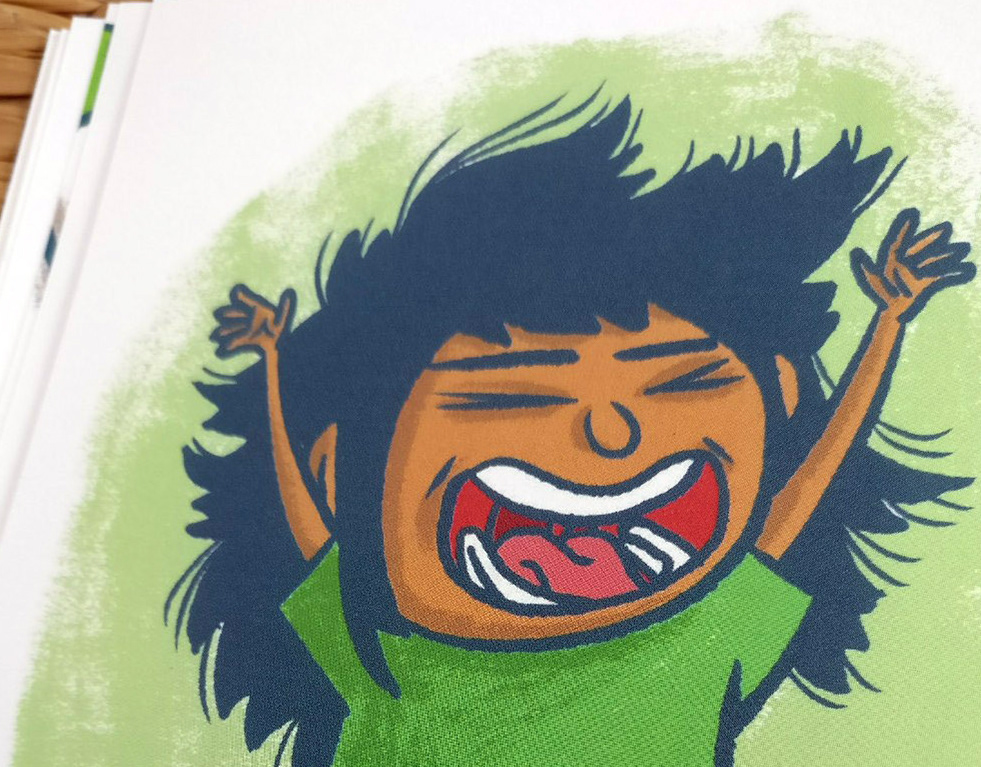A large-format diptych consisting of two 7ft x 5ft panels, now hanging in the student lobby of Azim Premji University's new Universal Hostel building. (Many thanks to Thara Thomas, of the APU art team, for commissioning and coordinating this project.)
A description of the themes and ideas contained in this artwork follow the images below.
---
This diptych attempts to tell the story of our forests and their custodians, while fully acknowledging the futility of putting a fine point on such a massive and diverse landscape. India’s forests are a study in complexity, spanning vast geographies, climates and unique ecosystems. Fraught with all the minor variances and eccentricities of such a teeming multiculture, a single essential trait of our natural heritage would be impossible to pin down, if only one were to ignore the one factor that inevitably overrides, shapes and dramatises these and all other green spaces on Earth -- the human element, torn as it is between the all-gobbling toddler that is unchecked industrialisation and our much-denied instinct for self-preservation. These panels mainly concern the latter: how we can prevail over our worst tendencies if only we nourish our finer capacities for fairness, natural justice, and hope. And we have an array of role models to learn these qualities from -- the many guardians of our forests -- who have repeatedly and with endless courage demonstrated our better instincts.
These panels show just a few notable figures from a multi-generational, polycarpic struggle waged across many regions and political arenas. Seen here, in no particular order, are Sunderlal Bahuguna, Kinkri Devi, Kallen Pokkudan, Salumarada Thimmakka, Tulsi Gowda, Sugathakumari, Panduranga Hegde, Gaura Devi, Jadav Payeng, Basanti Devi, Dayamani Barla, as well as a too-small cross-section of the thousands of Adivasi groups across the country who have nurtured and peacefully coexisted with the natural world for centuries. These conservationists are depicted alongside a selection of forests that, again, represent but a fraction of the kind of abundant natural diversity this country has been lucky to host. The composition and placement of these different landscapes roughly correspond to the types of forests one might see in each part of India -- from evergreen forests, swamps, mangroves, and littoral forests of the peripheries of the country, to the various deciduous forests of our heartlands, to the thorn forests and grasslands of our drier regions, and the alpine and coniferous forests of our northern mountain ranges. These spaces, in turn, play host to an overwhelming convolution of fauna, which has been only hinted at here in the most limited sense. If one must do proper justice to the grand expanse of this country’s many environments on a single canvas, it would, indeed, have to span the entire length and breadth of this land.
The intention of this work is, ultimately, not to fetishise the spaces and people illustrated here, but to celebrate in a small way the incredible beauty we still possess, the battles we have won, and the courage and tenacity of our amazing environmental heroes. These folks represent our best ideals, they protect our future from our worst selves, and what they have fought for -- and is now our fight to carry on -- is our right to live our best lives.

